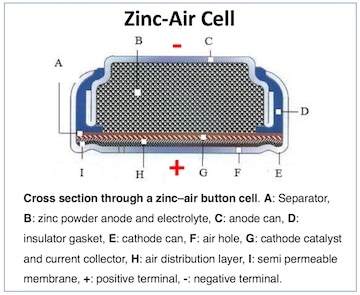Changes of all types during the past 10-15 years should have provided Audiology with some valuable lessons. But the rationale that helped shape things in the past may no longer apply. Old people and ideas may need to move out of the way. Audiologists should consider a “remake” to counter these coming changes. To that end, I offer some history, some suggestions, and some hope for the future.
The most important lessons from the past decades involves things we already know:
- Listen to patients—they assure success when served correctly.
- Move quickly toward as much transparency as possible—that’s good for everybody.
- Stay ahead of those would add any rule or regulation to what we do. When a rule or regulation is required, the first question we should ask is “Why?”
In the past, many rules and regulations have impacted Audiology. Here’s a partial list:
- The licensing of hearing aid dispensers
- The licensing of audiologists (and speech pathologists)
- The change that allowed audiologists to sell clinical devices
- The regulations requiring continuing education
- The changes in the taxation regulations for hearing aids
- The emergence of multiple professional organizations dedicated to audiology
- The rising of programs offering clinical audiology degrees (the AuD)
- The HIPAA regulations
- The sale of audiology offices to “non-clinical” entities.
Each of these changes could take up an entire blog when considering the history, the arguments both for and against, and the present status or outcome of those efforts. There are a couple of additional rules/regulations that are not on the list. (I admit to some biases.)
The Licensing Wars
I participated actively in the defining and committee work on licensing laws in two states. The licensing of dispensers came first. However, the same problems surrounded efforts of both dispensers and audiologists in both states: the opposition of physicians, audiologists and dispensers to each other. As you could no doubt predict, all the licensing arguments of each of these three groups were slightly different—but were essentially the same: each group argued that licensing should not apply to the others but was certainly necessary for them. Legal recognition is evidently desirable but may be of limited value. These were the first skirmishes in the “turf wars”.
In most states, following the licensing of dispensers, there arose a great effort to license audiologists and speech pathologists. This call came, for the most part, from the only group that was NOT licensed under state laws—the speech and hearing people. And, of course, opposition from dispensers and physicians was met at every turn.
Every step forward (?) was difficult, lengthy, and fraught with argument. Forgotten were the logic, arguments, agreements and misinterpretations leading to prior regulation. Eventually, the licensing laws for dispensers as well as speech and hearing clinicians passed in both states. If only that had been the end of it. This was the second battle of the turf wars.
The Continuing Education Issues
In the initial licensing provisions for all groups, mandates for continuing education (CE) were incorporated—with logic that assumed every licensee would strive to get better. CE courses also provide some evidence to the public that each licensee has “kept up”. An unforeseen problem was that CE courses for dispensers, audiologists and “dispensing physicians” sprung up being sponsored by anyone having something to sell. Many offerings were so product-specific that the licensing committees had to eventually amend their regulation to specify what could NOT be included in CE.
Not only that, but in several states, the licensing committees erroneously decided that dealing with amplification devices was not part of audiology or ENT training curricula. So, they added both audiology and dispensing CE requirements to those clinicians. And, they charged fees for BOTH licenses. To no one’s surprise, it did not end there.
Licensing requirements—skills and abilities needed to pass the tests—are updated periodically. One problem is that the law-making people are usually quite a distance behind the state-of-the-art. Technology changes faster than regulations. A second problem involves allowing “turf battles” to influence regulations. The results are rules that have little impact on the true state of affairs.
Licensing regulations have turned out to be largely problematic. How can the state assure that it issues licenses to only those who can adequately and safely serve the public? Who should regulate professional skills? Who should assure that members stay up-to-date? Can licensing and CE rules really hope to be current?
The lesson from our early rules and regulations might be that licensing and CE requirements don’t seem to have solved many audiology and dispensing issues. Rules have caused a whole additional set of downstream problems—something to consider in preparation for the future.







I can only add an Australian perspective to this, but we have a few parallels. I did a study a few years ago which showed how little hearing aid work was done on audiology courses, even though that is what most audiologists do. I have been very disappointed with the CPD program here – not anyone’s fault. I just find it pointless – excuse the term since points are are requirement. I prefer to encourage continuous learning in my teams – not point collection.
Thank you for the comment. I have few suggestions for improving these situations, but at least admitting to the existence of the problem(s) is a start. My opinion is that the regulations do little to those not in compliance and impede those who really do not need the regulation or law. How to tell the difference between the two groups would be a good starting place.